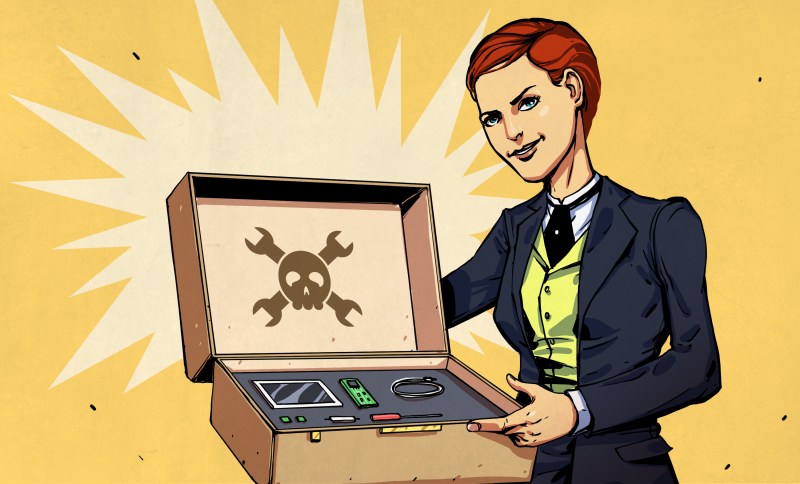This article is the fifth in a series looking at the process of bringing an electronic kit to market from a personal project. We’ve looked at market research, we’ve discussed making a product from your project and writing the best instructions possible before stuffing your first kits ready for sale. In this article we’ll tackle the different means of putting your kits out there for sale.
Given a box of ready-to-sell kits, what next? You have to find some means of selling them, getting them in front of your customer, making the sale, sending them to the purchaser, and safely collecting their money. A few years ago this was an expensive and risky process involving adverts in print magazines and a lot of waiting, but we are fortunate. The Internet has delivered us all the tools we need to market and sell a product like an electronic kit, and in a way that needn’t cost a fortune. We’ll now run through a few of those options for selling your kits, before looking at shipping, marketing, and post-sales support in the final article in the series.

You might say that both the easiest and hardest way to sell kits is to do it in person, face to face. It’s easiest in that the customer gives you the money and you give them the kit, and that’s the job done. But it’s also the hardest in that to be successful at it you have to get on the road and tour Maker Faires, radio rallies, hackspaces and wherever you think customers might be found. You will have to carry all you’ll need to set up a stall: a folding table, chair, cash box, and stocks of everything you want to offer your customers. Some people thrive on this round and make a success of it, but it’s extremely hard work and not for the faint-hearted.
One of the simplest ways to sell your kit products online comes through Hackaday’s sister company here in the Supplyframe family, Tindie. It’s an online marketplace for maker products with a focus on electronics, and it has a lot of appeal for a very small kit business in that it takes away some of the hard work and risk involved with a web shop. It’s not for everyone and this series has not been merely a thinly disguised shill for its services, but it remains one of the easiest ways for a small-time manufacturer of electronic kits to sell their products.
some of the hard work and risk involved with a web shop. It’s not for everyone and this series has not been merely a thinly disguised shill for its services, but it remains one of the easiest ways for a small-time manufacturer of electronic kits to sell their products.
If a service like Tindie doesn’t enthuse you, you might next consider an online shop of your own. This is the most flexible way to present your products online, but also one that is fraught with risks and can be very hard work. Running your own server with an online shop on it is a full-time job in itself, and keeping everything up-to-date on the security front carries a significant risk unless you are a serious web security expert. Fortunately though this is not your only option when it comes to online shops, as with so many things there are cloud based online shop services such as Shopify which take away most of the risk involved with running your own server and provide the whole package as a turnkey shop which you can then get on with using to sell your kits.
Whichever online service you use, consider how well the shop side of the offering integrates with other services such as shipping or integrated label stationery. This last point is particularly useful if they offer it, the speed and convenience of printing both invoice and shipping label in one go saves a lot of time.
You should look at how their card payment gateway alerts you to risky purchases, how long they hold on to your money, and how much of a cut they take. You will get people trying it on with fraudulent cards or other dodgy transactions, and when that happens the liability is sadly on you. A good card processing service will alert you to these problems and allow you to query or decline them before you lose any money.
Finally, one option for selling a kit comes through a crowdfunding service like Kickstarter. It’s important to make the point that this should not be seen as a replacement for a store but as a means to launch a product and to fund a production run you might not otherwise be able to afford, but it remains a good way to get your start. If you went for this route you’d proceed through all the steps before stuffing a very small production run of kits, and use those initial kits for the materials to launch your campaign. It’s not a process without risks though, there have been enough spectacular crowdfunding failures to prove that. If you decide a crowdfunding campaign is for you then ensure that you put extra care into your budgeting, always assume the worst case scenario and factor in some margin accordingly. Don’t set your target too high, but have a plan in place as to what you would do if your campaign was massively oversubscribed.
In a way a surprisingly good outcome from a crowdfunding campaign is for it to fail. If your campaign fails you have lost no money, but you have learned a lot about your market and gained a huge amount of exposure without having to deal with an overwhelming order fulfilment problem. A lot of your backers will come and buy your product anyway when you launch it through one of the methods in the previous paragraphs.
A lot of ground has been covered in our journey through the process of establishing a small kit business, but there is one more step to go. We’ve considered market research, discussed turning your one-off project into a saleable product, looked at writing kit instructions, packing kits, and now setting up a sales channel for them. In the final article we’ll think about what happens once you’ve made the sale; how you ship them to your customers, and how you support those customers once they’ve received their kits..

















“But it’s also the hardest in that to be successful at it you have to get on the road and tour Maker Faires, radio rallies, hackspaces and wherever you think customers might be found.”
Also, you have to interact face-to-face with other human beings, and that just ain’t gonna fly…
Actually it appears to fly quite well, but as the article suggest, not all of us, would be great pilots.
But it’s serial, and the symbol rate is really slow.
There’s no mention of the rather obvious and popular method of putting your product on ebay, and getting paid via Paypal. How does that compare to things like Tindie, Kickstarter, or your own website?
Very true, there isn’t. Probably because it wasn’t one of the avenues I investigated when I set up my kit business, I’m not an eBay user.
It would be interesting to hear from any kit makers who have pursued this path, to learn of any pitfalls.
From a personal perspective I’m always a bit wary of PayPal, they’re an escrow service not a bank, and their practices are not always in the favour of small sellers. A Google search will turn up some PayPal horror stories, when it’s your livelihood that’s something you’d probably best avoid.